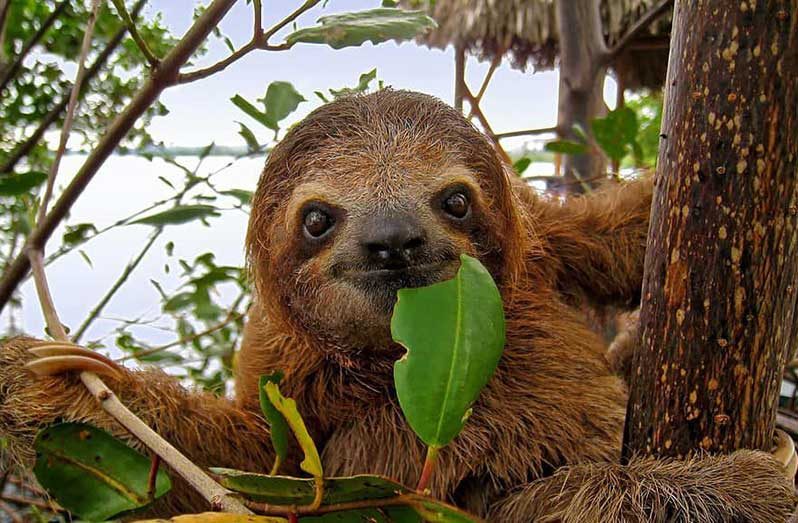–President Ali announces, as country recommits to forest conservation efforts
PRESIDENT Dr. Irfaan Ali has announced that, driven by its Low-Carbon Development Strategy (LCDs) 2030, Guyana will spearhead a worldwide coalition aimed at securing funding to bolster the preservation of the Amazon Basin’s biodiversity.
Dr. Ali made the revelation on Wednesday at the opening ceremony of the Caribbean Investment Forum being held here at the Arthur Chung Conference Centre, at Liliendaal, Georgetown.
“Guyana intends to take the leadership role on mobilising friends and countries with a rich biodiversity into a global coalition alliance on biodiversity, and to commence the work on creating [a] scalable model that would address forest and biodiversity together,” the President said.
Earlier in the day, President Ali had engaged regional stakeholders at the 2024 Concordia Amazonas Summit also being held here.
Dr. Ali conducted comprehensive discussions on Wednesday, emphasising the necessity of a collaborative approach to preserve the flora and fauna of the region.
In 2009, Guyana became the first developing nation to introduce the Low-Carbon Development Strategy (LCDS). The strategy delineated a vision for the promotion of fair and sustainable development, while simultaneously safeguarding the nation’s forests, which constitute approximately 85 per cent of its total land area.
In the same year, Norway and Guyana reached an agreement to collaborate on the development of a model advancement payment for forests.
The President of the country at the time, Bharrat Jagdeo, along with Mr. Erik Solheim, the Minister of Environment and International Development of Norway, entered into an agreement which involved Norway providing financial compensation to Guyana for its forest-climate services.
Through this approach, the country has successfully executed transactions worth nearly US$1 billion for the climate services rendered by Guyana’s forests. Out of this amount, US$227 million originated from the bilateral agreement with the Government of Norway, while an additional US$750 million resulted from the sale of ART-TREES credits in 2023.
By means of its LCDS, Guyana has established a framework to achieve a harmonious integration of economic development and the preservation of the nation’s forests and biodiversity, while also receiving compensation for these efforts.
“We have committed, with Concordia, to work on bringing together the stakeholders, the leaders of these 17 countries, members of the academic community so that we can work together on building this model, to develop a pricing mechanism,” Dr. Ali said.
Currently, Guyana has commenced engagements with several commercial airlines to secure a market within the aviation sector for its certified carbon units.
Guyana became the first country to receive CORSIA (carbon offsetting and reduction scheme for international aviation) eligible credits for airlines.
“We are a country with tremendous experience; the most successful model of forest was developed by Guyana. And today, Guyana is presenting global leadership,” Dr. Ali said.
The Amazon rainforest covers over 5,000,000km² of land across nine countries; this massive landmass of forest coverage requires collaborative efforts to continue conservation.
“We want to set the narrative on creating the benchmark for biodiversity creating a framework and working model on biodiversity, making economic assessments …developing biodiversity financing mechanism,” Dr. Ali said.
Back in April, President Ali had made a case for enhancing efforts to conserve forests within the Caribbean and Latin American region during a presentation at the Sixth Annual Security Challenges in Latin America Forum, held at the Johns Hopkins University Bloomberg Centre, School of Advanced International Studies in the United States of America.
Breaking down the statistics, President Ali highlighted that many Caribbean nations have lost over 90 per cent of its original forest cover as a result of hurricanes, agricultural purposes, urban development, and tourism infrastructure.
The Amazon Basin which is often referred to as the “lungs” of the earth is facing disastrous effects to its ecosystem.
“Over the last 50 years, we have seen some worrying trends and signs. Approximately 20 per cent of the Amazon Rainforest has been destroyed. This equates to over 300,000mi² or 77 hectares of forest loss; 77 million hectares of forest lost since 1970.”
He added: “Just imagine. 300,000mi² of forest loss. From 2001 to 2012, forest losses in the Amazon Basin approximate to about 17.7 million hectares, averaging 1.4 million hectares per year. That is the average forest loss annually, 1.4 million hectares annually.”
This, Dr Ali said, needs to be addressed.



.jpg)









